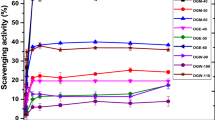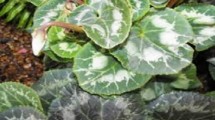Abstract
INFORMATION was first received from Prof. C. Rendle-Short of the Department of Obstetrics and Gynæcology of this Medical School, that pregnant African women frequently take native medicines at or near term, even when in hospital, in an attempt to accelerate birth. It was thought likely that the excessively high incidence of uterine rupture occurring locally1, might be due in part to powerful uterine spasmogens in these medicines, and some of the plants were obtained from African herbalists and identified.
This is a preview of subscription content, access via your institution
Access options
Subscribe to this journal
Receive 51 print issues and online access
$199.00 per year
only $3.90 per issue
Buy this article
- Purchase on Springer Link
- Instant access to full article PDF
Prices may be subject to local taxes which are calculated during checkout
Similar content being viewed by others
References
Rendle-Short, C. (personal communication, to be published).
Watt, J. M., and Breyer-Brandwijk, M. G., Arch. Int. Pharm Ther., 36, 233 (1929). Tschirch, A., “Handbuch der Pharmakognosie”, 2, 2, 1501; 3, 1, 26 ( Leipzig, C. H. Tauchnitz, 1909–25). Peyer, W., and Liebisch, W., Apoth. Ztg., 94, 1422 (1928). Barua, A. K., and Raman, S. P., Sci. and Culture, 23, 435 (1958). Farooq, M. O., Varshney, I. P., and Hasan, H., Arch. Pharm., 292, 57 (1959).
Smyth, C. N., J. Obst. Gyn., 64, 59 (1957).
Author information
Authors and Affiliations
Rights and permissions
About this article
Cite this article
LIPTON, A. Physiological Activity in Extracts of Albizia Species. Nature 184, 822–823 (1959). https://doi.org/10.1038/184822b0
Issue Date:
DOI: https://doi.org/10.1038/184822b0
Comments
By submitting a comment you agree to abide by our Terms and Community Guidelines. If you find something abusive or that does not comply with our terms or guidelines please flag it as inappropriate.



